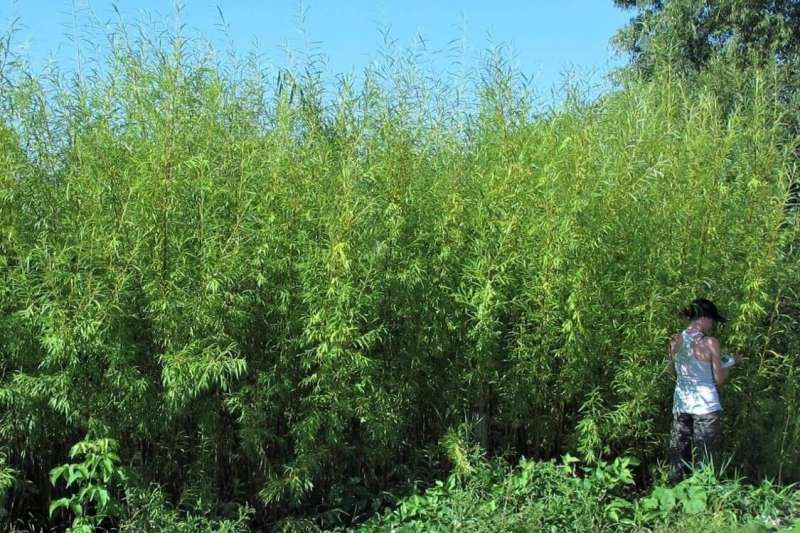
Plants can be decoration, medicine, food, garments—they have as many uses as they do shapes and sizes. And Jacques Brisson, professor in the University of Montreal’s Department of Biological Sciences, knows it better than anyone.
Brisson is a researcher at the UdeM-affiliated Institut de recherche en biologie végétale. His speciality is phytotechnologies, the use of plants to solve the environmental problems caused by human activities. His work as NSERC/Hydro-Québec Industrial Research Chair in Phytotechnology focuses particularly on harnessing the natural ability of plants to treat wastewater.
Recently, his lab published two separate studies on these sustainable and cost-effective technologies. Here’s a quick overview.
Harnessing plants as solar-powered pumps
Chloé Frédette, who completed her Ph.D. with Brisson, has published important findings in the journal Water Research. Together, the two researchers created a model for maximizing the evapotranspiration potential of plants.
“Chloé’s project developed an original design for a zero-liquid-discharge wetland that treats industrial wastewater,” said Brisson. “The idea was to completely eliminate all of the contaminated water by evapotranspiration so that none is discharged into the environment.”
A zero-liquid-discharge wetland is a leakproof artificial basin containing vegetation growing in soil and coarse sand. “When the contaminated water passes through the sand, the plants absorb the water and then release it into the air as vapor,” explained Brisson. “The contaminants are immobilized in the sand, thereby eliminating any danger of leaching into the environment. The plants and the bacteria in their roots can also break down some of the contaminants and render them less toxic.”

Such “constructed wetlands” have long been used to treat wastewater, especially in Europe. What is innovative about Fredette and Brisson’s work is that they have modeled a constructed wetland whose parameters can be adjusted to optimize the treatment of leachate, a mixture of rainwater and buried contaminants.
“The big question was how can we design a zero-liquid-discharge wetland when the quantity of water entering the system is unpredictable because it varies depending on rainfall,” said Brisson. “In the end, the solution lies in the shape of the wetland, the choice of vegetation and installation of a temporary storage tank for the water.”
While the model was developed for Montreal’s climate, it can be adapted to any climate by choosing plants that have a high evapotranspiration rate and are suited to local conditions. “This green approach has enormous potential, especially since it is much cheaper than conventional wastewater treatment plants,” Brisson pointed out.
Using biochar to filter out pesticides
Another study by Brisson and his lab examines the effectiveness of constructed wetlands for treating agricultural runoff. Published in Ecological Engineering, this experimental study showed that adding biochar to wetland vegetation is very effective in treating water contaminated with chlorantraniliprole (CAP), a common insecticide.
Biochar is a type of charcoal (carbonized organic material) that is often used to improve soil fertility. “In our experiment, which ran for three years, adding biochar to the soil in our constructed wetlands removed more than 90% of CAP from the agricultural runoff,” said Brisson. Similar results were reported for glyphosate, a widely used herbicide sold under the brand name Roundup.
Brisson’s research represents one more step towards finding greener methods for treating wastewater and better ways to mitigate the ecological damage caused by human activities.
New evaluation framework for energy neutrality potential of wastewater treatment plants
Chloé Frédette et al, Design of a zero liquid discharge leachate treatment system using an evapotranspiration willow bed, Water Research (2021). DOI: 10.1016/j.watres.2021.117950
Khalil Abas et al, Effects of plants and biochar on the performance of treatment wetlands for removal of the pesticide chlorantraniliprole from agricultural runoff, Ecological Engineering (2021). DOI: 10.1016/j.ecoleng.2021.106477
Citation:
Using the power of plants to filter wastewater (2022, February 24)
retrieved 24 February 2022
from https://techxplore.com/news/2022-02-power-filter-wastewater.html
This document is subject to copyright. Apart from any fair dealing for the purpose of private study or research, no
part may be reproduced without the written permission. The content is provided for information purposes only.
Stay connected with us on social media platform for instant update click here to join our Twitter, & Facebook
We are now on Telegram. Click here to join our channel (@TechiUpdate) and stay updated with the latest Technology headlines.
For all the latest Technology News Click Here
For the latest news and updates, follow us on Google News.
